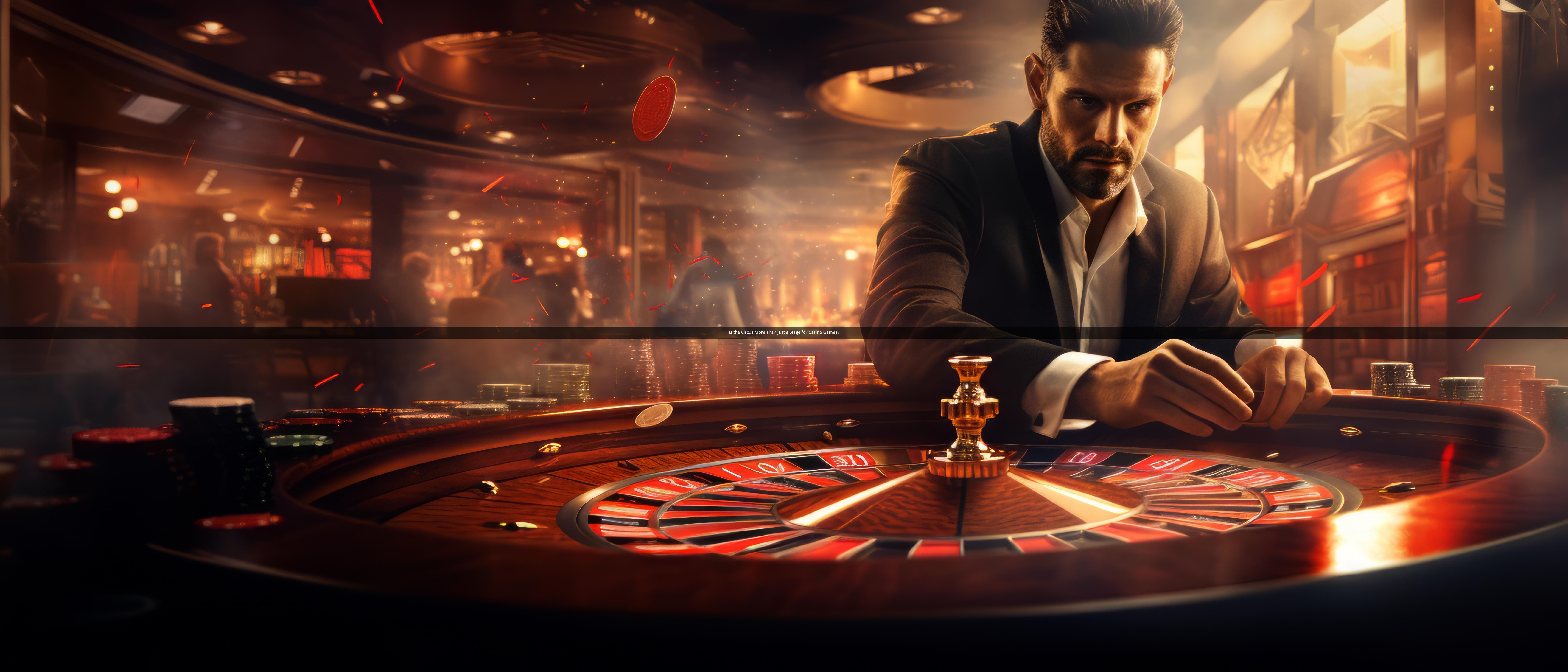
Introduction
Have you ever wondered what lies behind the vibrant, chaotic world of the circus? Often overshadowed by the spectacle of acrobats and animals, the circus also serves as a stage for a variety of casino games. This juxtaposition of thrill and chance raises intriguing questions about the nature of entertainment and the allure of gambling. In this exploration, we will delve into the intricate relationship between the circus and casino games, examining their origins, the cultural significance, and the experiences they offer to the audience.
I. The Historical Tapestry
1. Ancient Roots of the Circus
The origins of the circus can be traced back to ancient Rome, where it was a place of public entertainment, encompassing not only animal shows but also gladiatorial contests. Over time, the circus evolved, incorporating various forms of entertainment, including games of chance. The first recorded casino, the Casino di Venezia, was established in 1638, marking the beginning of a symbiotic relationship between the circus and gambling.
2. The Golden Age of Circus and Casino
During the 19th and early 20th centuries, the circus and casino experienced a golden age. The circus, with its traveling troupes, became a symbol of excitement and adventure, while the casino, with its opulent halls and thrilling games, became a place of high society. This era saw the integration of casino games into the circus, creating a unique blend of entertainment.
II. The Cultural Significance
1. The Circus as a Mirror of Society
The circus, with its diverse array of performers and audience, serves as a mirror to society. Similarly, casino games reflect the human fascination with chance and fortune. The circus and casino, therefore, share a common cultural significance in their portrayal of the human condition.
2. The Circus as a Symbol of Freedom
The circus, with its nomadic lifestyle, has long been associated with freedom and escape. Casino games, too, offer a sense of liberation, allowing participants to take risks and dream of big wins. This shared symbolism further strengthens the bond between the circus and casino.
III. The Experience of the Audience
1. The Thrill of the Circus
The circus experience is one of awe and wonder. The sight of acrobats defying gravity, animals performing tricks, and clowns providing laughter creates an atmosphere of excitement and anticipation. This thrill is amplified when casino games are introduced, adding an element of chance to the mix.
2. The Allure of Casino Games
The allure of casino games lies in their simplicity and the promise of instant gratification. Whether it's spinning a roulette wheel, placing bets on a blackjack table, or pulling a lever on a slot machine, the experience is thrilling and engaging. The circus, with its casino games, offers a unique blend of these experiences.
IV. The Art of the Performer
1. The Acrobat's Balance
The acrobat's performance in the circus is a delicate balance of skill and grace. Similarly, the dealer in a casino must maintain composure and precision, ensuring a fair and enjoyable experience for all players. The art of performance is central to both the circus and casino.
2. The Magician's Illusion
The magician's ability to create illusions is a cornerstone of the circus. In the casino, the illusion is often the game itself, with its seemingly random outcomes and the allure of winning big. Both the magician and the casino game creator use artistry to captivate their audiences.
V. The Challenges of Integration
1. Balancing Entertainment and Risk
Integrating casino games into the circus presents a unique challenge. The circus must balance the entertainment value of its shows with the risk associated with gambling. Overemphasis on the casino aspect could detract from the overall experience.
2. Navigating Legal and Ethical Considerations
The integration of casino games into the circus also requires careful navigation of legal and ethical considerations. Ensuring that the games are fair and accessible to all audience members is crucial. Additionally, the circus must be mindful of the potential negative consequences of gambling addiction.
Conclusion
The circus and casino games share a complex and fascinating relationship. While the circus offers a world of wonder and excitement, the casino games add an element of chance and risk. This unique blend of entertainment and gambling creates a captivating experience for audiences around the world. As the circus continues to evolve, it will be intriguing to see how it incorporates and adapts to the ever-changing landscape of casino games.
Questions and Answers
Q1: How did the integration of casino games into the circus begin?
A1: The integration of casino games into the circus began during the 19th and early 20th centuries, with the establishment of casinos and the evolution of the circus into a more diverse form of entertainment.
Q2: What is the cultural significance of the circus and casino games?
A2: The circus and casino games both reflect the human fascination with chance and fortune, serving as a mirror to society and symbolizing freedom and escape.
Q3: How do acrobats and dealers in casinos share a common skill set?
A3: Acrobats and dealers both require a balance of skill and composure to perform their roles effectively. They must maintain precision and focus, ensuring a fair and enjoyable experience for their audience.
Q4: What challenges does the integration of casino games into the circus present?
A4: The integration of casino games into the circus presents challenges in balancing entertainment and risk, as well as navigating legal and ethical considerations to ensure a safe and fair experience for all.
Q5: How do the circus and casino games contribute to the overall entertainment experience?
A5: The circus and casino games contribute to the overall entertainment experience by offering a blend of wonder, excitement, and the thrill of chance. They create a captivating atmosphere that engages the audience and leaves a lasting impression.